Benefits of Botox for Bruxism
Bruxism, the habitual grinding or clenching of teeth, can lead to jaw pain, headaches, and tooth damage. Botox has emerged as a promising treatment option for bruxism in Cheam, Surrey, by temporarily relaxing the muscles responsible for these actions.
Reduced Teeth Grinding
Botox injections work by blocking nerve signals that trigger muscle contraction. In the case of bruxism, Botox can be injected into the masseter and temporalis muscles, which are primarily involved in teeth grinding. By relaxing these muscles, Botox effectively reduces the force and frequency of clenching and grinding.
This reduction in muscle activity can significantly alleviate symptoms associated with bruxism, such as jaw pain, headaches, earaches, and tooth wear. Botox treatment for bruxism is generally safe and well-tolerated, with minimal side effects.
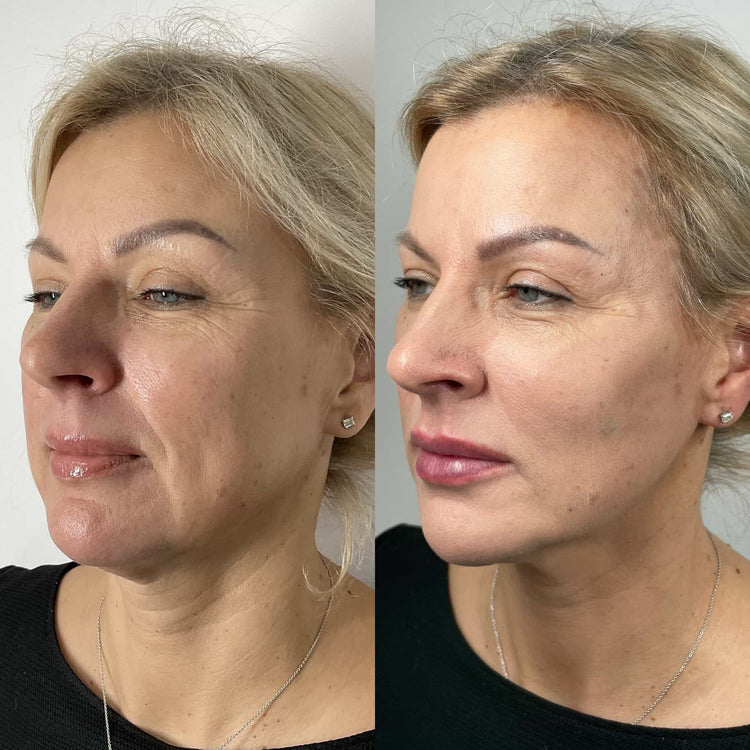
Improved Jaw Pain and Tension
Bruxism, the habitual grinding or clenching of teeth, can lead to jaw pain, headaches, and tooth damage. Botox has emerged as a promising treatment option for bruxism in Cheam, Surrey, by temporarily relaxing the muscles responsible for these actions.
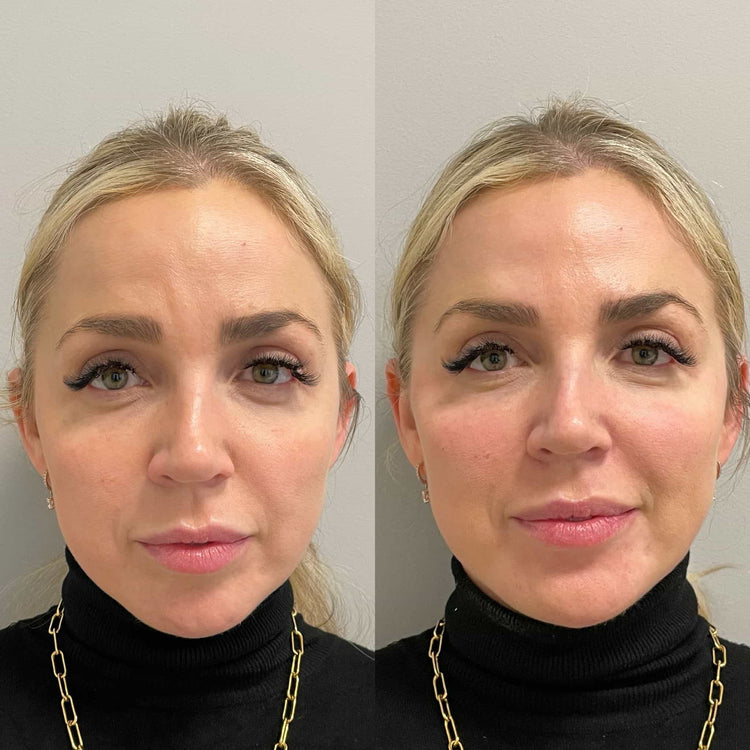
Botox injections work by blocking nerve signals that trigger muscle contraction. In the case of bruxism, Botox can be injected into the masseter and temporalis muscles, which are primarily involved in teeth grinding. By relaxing these muscles, Botox effectively reduces the force and frequency of clenching and grinding. This reduction in muscle activity can significantly alleviate symptoms associated with bruxism, such as jaw pain, headaches, earaches, and tooth wear.
Botox treatment for bruxism is generally safe and well-tolerated, with minimal side effects.
Minimized Earaches
Bruxism, the habitual grinding or clenching of teeth, can lead to jaw pain, headaches, and tooth damage. Botox has emerged as a promising treatment option for bruxism in Cheam, Surrey, by temporarily relaxing the muscles responsible for these actions.
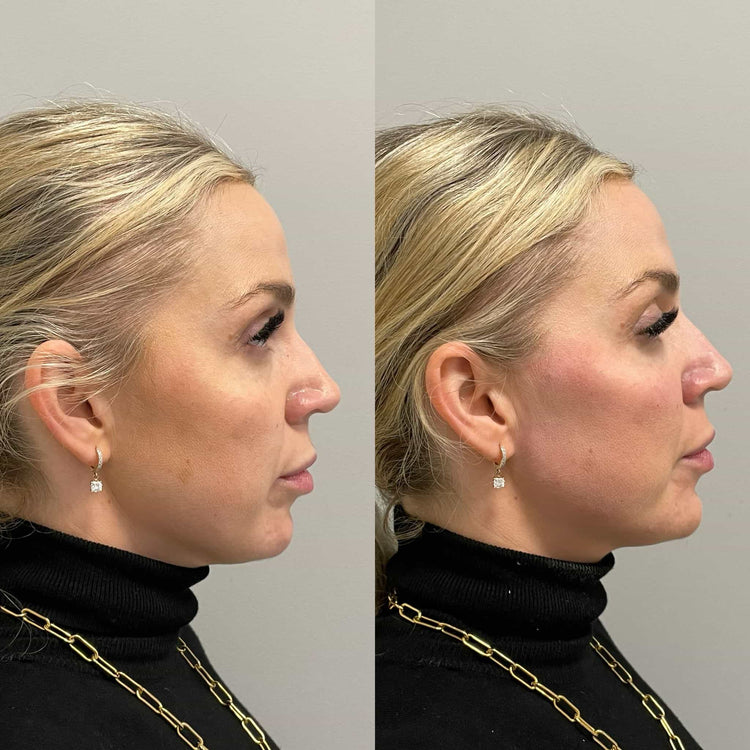
Botox injections work by blocking nerve signals that trigger muscle contraction. In the case of bruxism, Botox can be injected into the masseter and temporalis muscles, which are primarily involved in teeth grinding. By relaxing these muscles, Botox effectively reduces the force and frequency of clenching and grinding.
This reduction in muscle activity can significantly alleviate symptoms associated with bruxism, such as jaw pain, headaches, earaches, and tooth wear. Botox treatment for bruxism is generally safe and well-tolerated, with minimal side effects.
How Botox Works for Bruxism
Bruxism, the habitual grinding or clenching of teeth, can lead to jaw pain, headaches, and tooth damage. Botox has emerged as a promising treatment option for bruxism in Cheam, Surrey, by temporarily relaxing the muscles responsible for these actions.
Botox injections work by blocking nerve signals that trigger muscle contraction. In the case of bruxism, Botox can be injected into the masseter and temporalis muscles, which are primarily involved in teeth grinding. By relaxing these muscles, Botox effectively reduces the force and frequency of clenching and grinding.
This reduction in muscle activity can significantly alleviate symptoms associated with bruxism, such as jaw pain, headaches, earaches, and tooth wear. Botox treatment for bruxism is generally safe and well-tolerated, with minimal side effects.
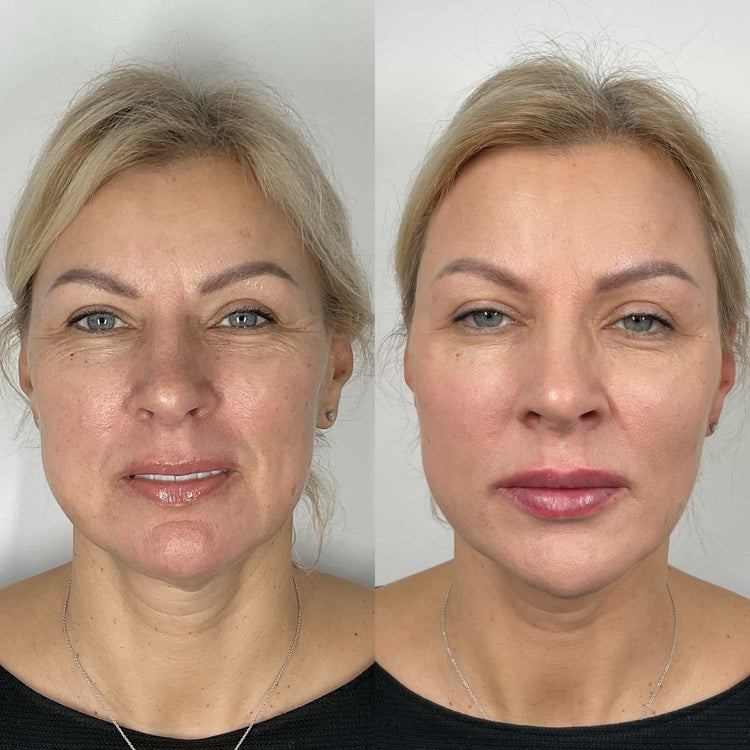
Relaxing Jaw Muscles
Bruxism, the habitual grinding or clenching of teeth, can lead to jaw pain, headaches, and tooth damage. Botox has emerged as a promising treatment option for bruxism in Cheam, Surrey, by temporarily relaxing the muscles responsible for these actions.
Botox injections work by blocking nerve signals that trigger muscle contraction. In the case of bruxism, Botox can be injected into the masseter and temporalis muscles, which are primarily involved in teeth grinding. By relaxing these muscles, Botox effectively reduces the force and frequency of clenching and grinding. This reduction in muscle activity can significantly alleviate symptoms associated with bruxism, such as jaw pain, headaches, earaches, and tooth wear.
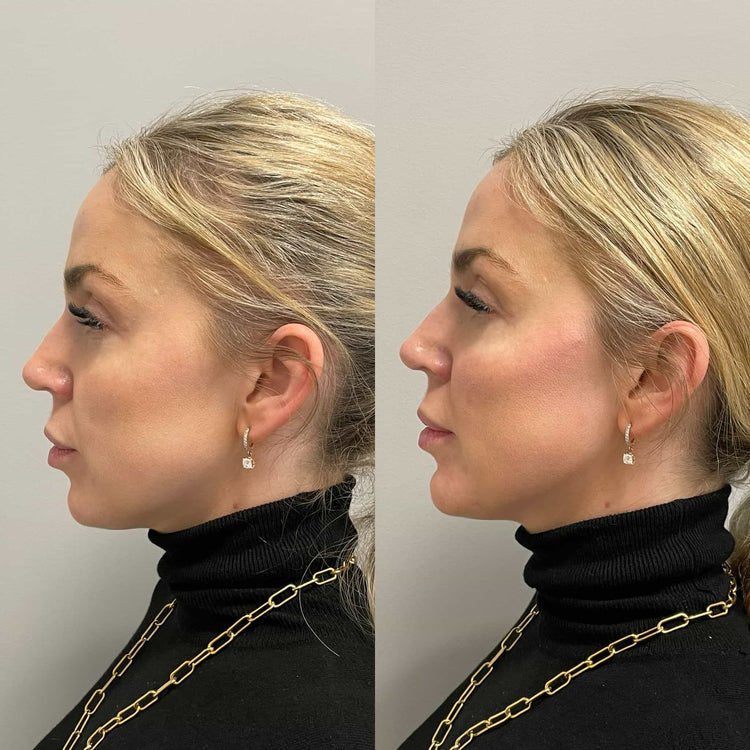
Botox treatment for bruxism is generally safe and well-tolerated, with minimal side effects.
Decreasing Muscle Activity
Bruxism, the habitual grinding or clenching of teeth, can lead to jaw pain, headaches, and tooth damage. Botox has emerged as a promising treatment option for bruxism in Cheam, Surrey, by temporarily relaxing the muscles responsible for these actions.
Botox injections work by blocking nerve signals that trigger muscle contraction. In the case of bruxism, Botox can be injected into the masseter and temporalis muscles, which are primarily involved in teeth grinding. By relaxing these muscles, Botox effectively reduces the force and frequency of clenching and grinding. This reduction in muscle activity can significantly alleviate symptoms associated with bruxism, such as jaw pain, headaches, earaches, and tooth wear.
Botox treatment for bruxism is generally safe and well-tolerated, with minimal side effects.
Finding a Qualified Practitioner in Cheam, Surrey
If you are experiencing the discomfort of bruxism in Cheam, Surrey, finding a qualified practitioner experienced in Botox treatments can be crucial.
Locating Dental Professionals
If you are experiencing the discomfort of bruxism in Cheam, Surrey, finding a qualified practitioner experienced in Botox treatments can be crucial.
- Start by asking your primary care physician for recommendations. They may know dentists or specialists in the area who offer Botox for bruxism.
- Consult online directories specifically for dental practitioners, filtering by location and specialty.
- Check with local dental associations or societies for listings of members who provide Botox treatments.
- Read online reviews from other patients who have received Botox for bruxism to gauge practitioner experience and satisfaction levels.
Checking Credentials and Experience
If you are experiencing the discomfort of bruxism in Cheam, Surrey, finding a qualified practitioner experienced in Botox treatments can be crucial.
- Start by asking your primary care physician for recommendations. They may know dentists or specialists in the area who offer Botox for bruxism.
- Consult online directories specifically for dental practitioners, filtering by location and specialty.
- Check with local dental associations or societies for listings of members who provide Botox treatments.
- Read online reviews from other patients who have received Botox for bruxism to gauge practitioner experience and satisfaction levels.
Once you’ve identified potential practitioners, it’s essential to verify their credentials and experience.
Confirm they are licensed dentists or medical professionals qualified to administer Botox. Inquire about their experience treating bruxism specifically, the number of Botox treatments they have performed, and any specialized training they may have received.
The Botox Treatment Process
Bruxism, the habitual grinding or clenching of teeth, can lead to jaw pain, headaches, and tooth damage. Botox has emerged as a promising treatment option for bruxism in Cheam, Surrey, by temporarily relaxing the muscles responsible for these actions.
Consultation and Assessment
The Botox treatment process begins with a consultation and assessment. During this appointment, a qualified practitioner will evaluate your symptoms, medical history, and dental health to determine if Botox is an appropriate treatment option for you.
They will also discuss your expectations and answer any questions you may have about the procedure. The practitioner may take photographs or impressions of your teeth to assess the severity of bruxism and guide injection placement.
The actual Botox injections are typically performed in a comfortable setting, often using topical anesthetic to minimize any discomfort.
Injection Technique
The Botox treatment process begins with a consultation and assessment. During this appointment, a qualified practitioner will evaluate your symptoms, medical history, and dental health to determine if Botox is an appropriate treatment option for you.
They will also discuss your expectations and answer any questions you may have about the procedure. The practitioner may take photographs or impressions of your teeth to assess the severity of bruxism and guide injection placement.
The actual Botox injections are typically performed in a comfortable setting, often using topical anesthetic to minimize any discomfort.
Injecting Botox involves a few simple steps.
First, the practitioner will carefully cleanse the area around the target muscles, which are usually the masseter and temporalis muscles involved in jaw clenching.
They will then use a very fine needle to inject small amounts of Botox directly into these muscles.
Each injection site is typically quick and involves minimal discomfort.
The entire procedure usually takes about 15-30 minutes.
Recovery Period
The Botox treatment process begins with a consultation and assessment. During this appointment, a qualified practitioner will evaluate your symptoms, medical history, and dental health to determine if Botox is an appropriate treatment option for you. They will also discuss your expectations and answer any questions you may have about the procedure. The practitioner may take photographs or impressions of your teeth to assess the severity of bruxism and guide injection placement.
The actual Botox injections are typically performed in a comfortable setting, often using topical anesthetic to minimize any discomfort. Injecting Botox involves a few simple steps. First, the practitioner will carefully cleanse the area around the target muscles, which are usually the masseter and temporalis muscles involved in jaw clenching. They will then use a very fine needle to inject small amounts of Botox directly into these muscles. Each injection site is typically quick and involves minimal discomfort. The entire procedure usually takes about 15-30 minutes.
Recovery from Botox injections for bruxism is generally quick and easy. There is usually minimal to no downtime required after the treatment. You may experience some mild swelling or tenderness at the injection sites, which typically subsides within a few hours to a day.
You can resume your normal activities immediately after the procedure. However, it’s recommended to avoid strenuous exercise or activities that could put pressure on your jaw for the first 24 hours. Most people notice a reduction in bruxism symptoms within a few days to a week after treatment.
The effects of Botox typically last for 3-6 months, at which point repeat treatments may be needed to maintain symptom relief.
Cost and Insurance Coverage
When considering Botox as a treatment for bruxism in Cheam, Surrey, understanding the associated costs and insurance coverage is essential.
Average Costs for Bruxism Treatment
The cost of Botox for bruxism can vary depending on several factors, including the severity of your condition, the number of injection sites required, and the experience and location of the practitioner.
Generally, you can expect to pay between £300 and £600 per treatment session. It’s important to note that this is an estimate, and a consultation with a qualified practitioner will provide a more accurate cost assessment tailored to your individual needs.
Regarding insurance coverage for Botox for bruxism, it can be somewhat complex.
Most traditional health insurance plans do not typically cover cosmetic procedures, and Botox is often categorized as a cosmetic treatment. However, if you have private medical insurance that specifically covers alternative therapies or dental treatments, there might be some coverage available for Botox for bruxism.
It’s crucial to contact your insurance provider directly to inquire about their specific policy on Botox for bruxism and clarify whether any pre-authorization or referrals are required.
Potential Insurance Reimbursement
The cost of Botox for bruxism can vary depending on factors such as the severity of your condition, the number of injection sites needed, and the practitioner’s experience and location. Generally, you might pay between £300 and £600 per treatment session.
Insurance coverage for Botox for bruxism can be complex. Most traditional health insurance plans don’t cover cosmetic procedures, which often includes Botox. However, if your private medical insurance covers alternative therapies or dental treatments, there might be some coverage. Contact your insurer directly to understand their specific policy on Botox for bruxism and any necessary pre-authorizations or referrals.
Potential Side Effects and Risks
While Botox injections can effectively alleviate bruxism symptoms, it’s essential to be aware of potential side effects. These are usually mild and temporary, but may include bruising, swelling, headache, or drooping eyelids at the injection site. In rare cases, more serious complications like muscle weakness or allergic reactions could occur.
Temporary Muscle Weakness
Potential side effects from Botox injections for bruxism are generally mild and temporary. Most commonly reported side effects include bruising, swelling, and tenderness at the injection sites. These usually subside within a few hours to a day. Other possible side effects may include headache, droopy eyelids, or muscle weakness around the treated area. It’s important to note that serious complications from Botox injections are rare but can occur.
If you experience any unusual or severe symptoms after your treatment, contact your practitioner immediately.
Asymmetry or Facial Droop (rare)
Potential side effects of Botox injections for bruxism are generally mild and temporary. Common side effects include bruising, swelling, tenderness at the injection sites, headache, and drooping eyelids. These usually subside within a few hours to a day.
Serious complications are rare but can occur. If you experience any unusual or severe symptoms after treatment, contact your practitioner immediately.
Alternatives to Botox for Bruxism
While Botox injections are a popular choice for managing bruxism in Cheam, Surrey, exploring alternative treatments is always wise. These alternatives may include:
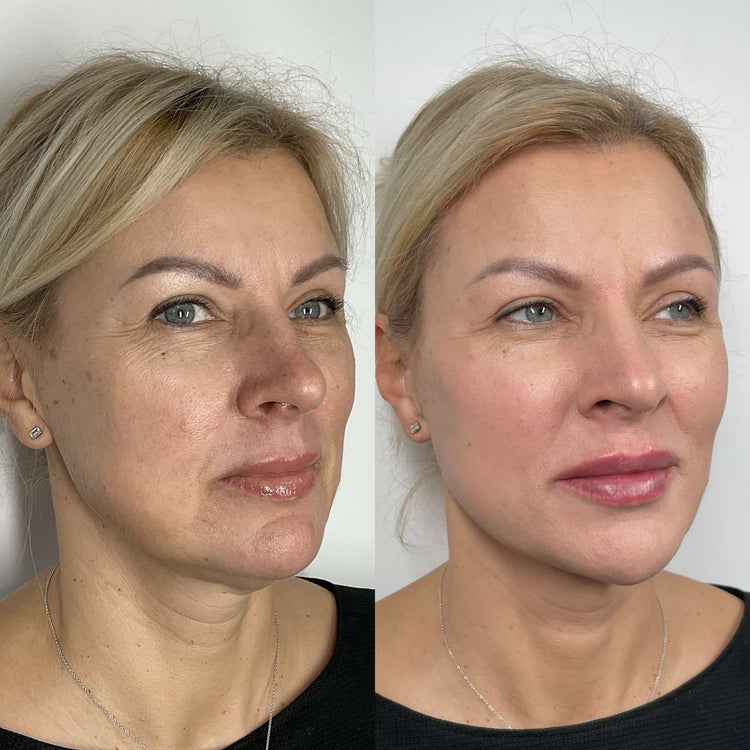
Mouthguards and Bite Splints
Mouthguards and Bite Splints: These custom-fitted appliances worn at night can help protect your teeth from grinding damage and reduce jaw muscle strain.
Dental Correction: If misaligned teeth or bite problems contribute to bruxism, orthodontic treatments like braces or Invisalign can address these underlying issues.
Stress Management Techniques: Stress is a common trigger for bruxism. Practicing relaxation techniques such as yoga, meditation, deep breathing exercises, or biofeedback can help reduce stress levels and lessen grinding habits.
Lifestyle Modifications: Avoiding caffeine and alcohol before bedtime, establishing a regular sleep schedule, and maintaining good posture can contribute to reducing bruxism.
Medications: In some cases, your doctor may prescribe muscle relaxants or antidepressants to help manage bruxism symptoms. It’s essential to discuss any medication options with your healthcare provider to determine the best course of treatment for you.
Stress Management Techniques
While Botox can be effective in treating bruxism, it is not the only option. Stress management techniques are particularly helpful for individuals who grind their teeth due to anxiety or tension. Techniques such as meditation, deep breathing exercises, yoga, and progressive muscle relaxation can help reduce overall stress levels, thereby lessening the likelihood of bruxism episodes.
Dental Corrections
Bruxism, the habitual grinding or clenching of teeth, can lead to jaw pain, headaches, and tooth damage. Botox has emerged as a promising treatment option for bruxism in Cheam, Surrey, by temporarily relaxing the muscles responsible for these actions.
Botox injections work by blocking nerve signals that trigger muscle contraction. In the case of bruxism, Botox can be injected into the masseter and temporalis muscles, which are primarily involved in teeth grinding. By relaxing these muscles, Botox effectively reduces the force and frequency of clenching and grinding.
This reduction in muscle activity can significantly alleviate symptoms associated with bruxism, such as jaw pain, headaches, earaches, and tooth wear. Botox treatment for bruxism is generally safe and well-tolerated, with minimal side effects.
- Mouthguards and Bite Splints: These custom-fitted appliances worn at night can help protect your teeth from grinding damage and reduce jaw muscle strain.
- Dental Correction: If misaligned teeth or bite problems contribute to bruxism, orthodontic treatments like braces or Invisalign can address these underlying issues.
- Stress Management Techniques: Stress is a common trigger for bruxism. Practicing relaxation techniques such as yoga, meditation, deep breathing exercises, or biofeedback can help reduce stress levels and lessen grinding habits.
- Lifestyle Modifications: Avoiding caffeine and alcohol before bedtime, establishing a regular sleep schedule, and maintaining good posture can contribute to reducing bruxism.
- Medications: In some cases, your doctor may prescribe muscle relaxants or antidepressants to help manage bruxism symptoms. It’s essential to discuss any medication options with your healthcare provider to determine the best course of treatment for you.
Book a consultation for bespoke lip augmentation with Dr. Laura Geige at It’s Me & You Clinic
